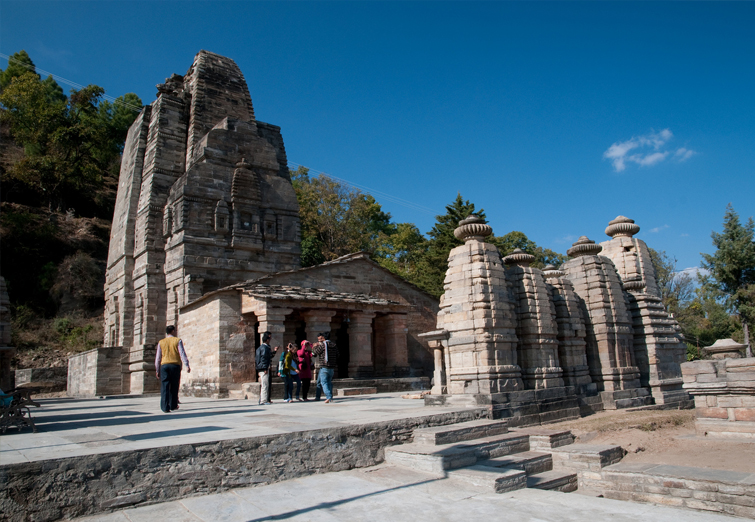Located in the Bageshwar district of Uttarakhand, Baijnath Temple is a revered Hindu shrine dedicated to Lord Shiva. This ancient temple, believed to be built in the 12th century by the Katyuri kings, is not only an architectural marvel but also a spiritual center for thousands of pilgrims. Its serene surroundings, historical significance, and proximity to the banks of the Gomti River make it a must-visit destination for devotees and history enthusiasts alike.

Historical Significance
The Baijnath Temple is steeped in rich history and is an important site in the Kumaon region of Uttarakhand. It is believed that the temple was constructed during the reign of the Katyuri kings, who were known for their patronage of Hindu temples and cultural development. The architecture of the temple reflects the traditional North Indian style, with intricate carvings and sculptures adorning its walls.
According to local legends, the temple is named after the deity “Baijnath,” a form of Lord Shiva. It is said that Lord Shiva, in the form of Baijnath, cured the demon king “Banasur” of his ailments. The temple is dedicated to the worship of Shiva, and the main shrine houses a large idol of the deity.
The Spiritual Journey
Baijnath Temple holds significant spiritual importance and is an integral part of the Panch Kedar pilgrimage circuit in Uttarakhand, which includes five famous temples dedicated to Lord Shiva. The peaceful and serene atmosphere surrounding the temple, coupled with its stunning natural beauty, makes it a perfect place for meditation, reflection, and prayer.
Devotees visit the Baijnath Temple to seek blessings from Lord Shiva, especially for healing, peace, and well-being. The temple complex is home to several smaller shrines, each dedicated to various deities, making it an important spiritual hub for those visiting the region.
A Scenic Retreat
The Baijnath Temple is situated amidst the breathtaking beauty of the Kumaon Himalayas. The temple’s location offers spectacular views of lush greenery, snow-capped peaks, and the flowing Gomti River. The surrounding landscapes, dotted with terraced fields, ancient banyan trees, and charming villages, create a picturesque environment perfect for nature lovers and trekkers.
Visitors can also explore nearby attractions like the Kausani Hill Station, which is just 18 kilometers from Baijnath. From Kausani, you can enjoy panoramic views of the Nanda Devi, Trishul, and Panchachuli peaks, making it a popular spot for sightseeing.
Best Time to Visit
The best time to visit Baijnath Temple is during the summer months (April to June) and the autumn months (September to November), when the weather is pleasant and ideal for temple visits and exploration of the surrounding areas. Winters can be cold and harsh, with heavy snowfall, especially in the higher altitudes, which may hinder travel.
Conclusion
Baijnath Temple, with its historical significance, spiritual atmosphere, and breathtaking surroundings, is a perfect destination for those seeking peace, spirituality, and a connection to nature. Whether you are visiting for religious reasons, exploring the rich history of the temple, or simply enjoying the natural beauty of the Kumaon region, Baijnath Temple promises an unforgettable experience. It remains an enduring testament to the spiritual heritage of Uttarakhand and a must-visit destination for pilgrims and travelers alike.

